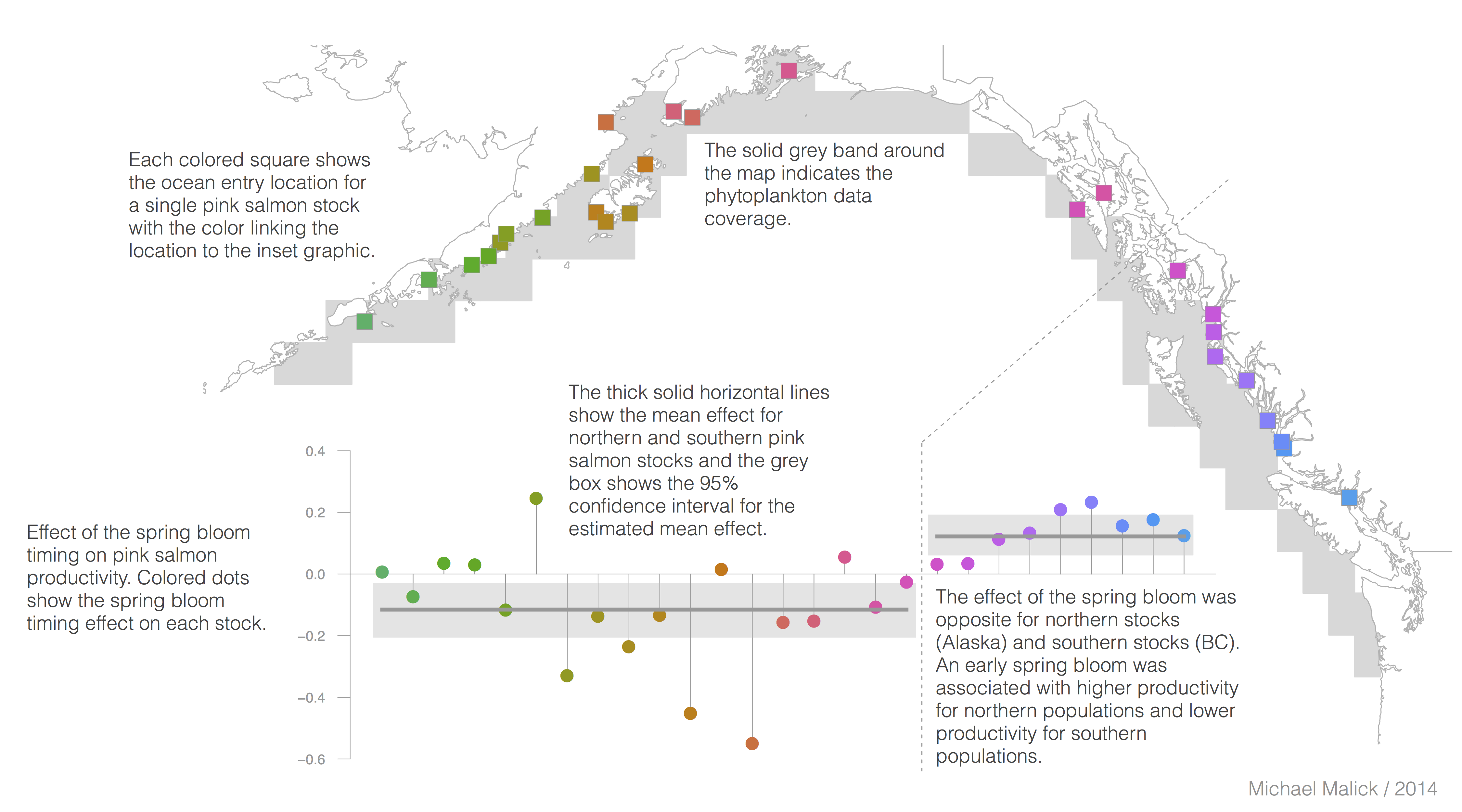Phytoplankton phenology as a driver of salmon dynamics
We analyzed the effects of the spring bloom timing on pink salmon productivity (adults produced per spawner) in the Northeast Pacific Ocean to better understand the mechanisms linking biological oceanographic conditions to Pacific salmon population dynamics.
Using a combination of single stock and hierarchical models, we estimated the effect of the spring bloom timing on each of 27 pink salmon stocks, as well as an overall regional effect across all stocks. Our results indicated that the spring bloom timing was significantly correlated with salmon productivity for both northern (Alaska) and southern (British Columbia) populations, although the correlations were opposite in sign. An early spring bloom was associated with higher productivity for northern populations and lower productivity for southern populations. Overall, our results suggest that changes in spring bloom timing resulting from natural climate variability or anthropogenic climate change could potentially cause latitudinal shifts in salmon productivity.
Citation: Malick, M.J., S.P. Cox, F.J. Mueter, R.M. Peterman. 2015. Linking phytoplankton phenology to salmon productivity along a north-south gradient in the Northeast Pacific Ocean. Canadian Journal of Fisheries and Aquatic Sciences 72:697-708. https://doi.org/10.1139/cjfas-2014-0298



